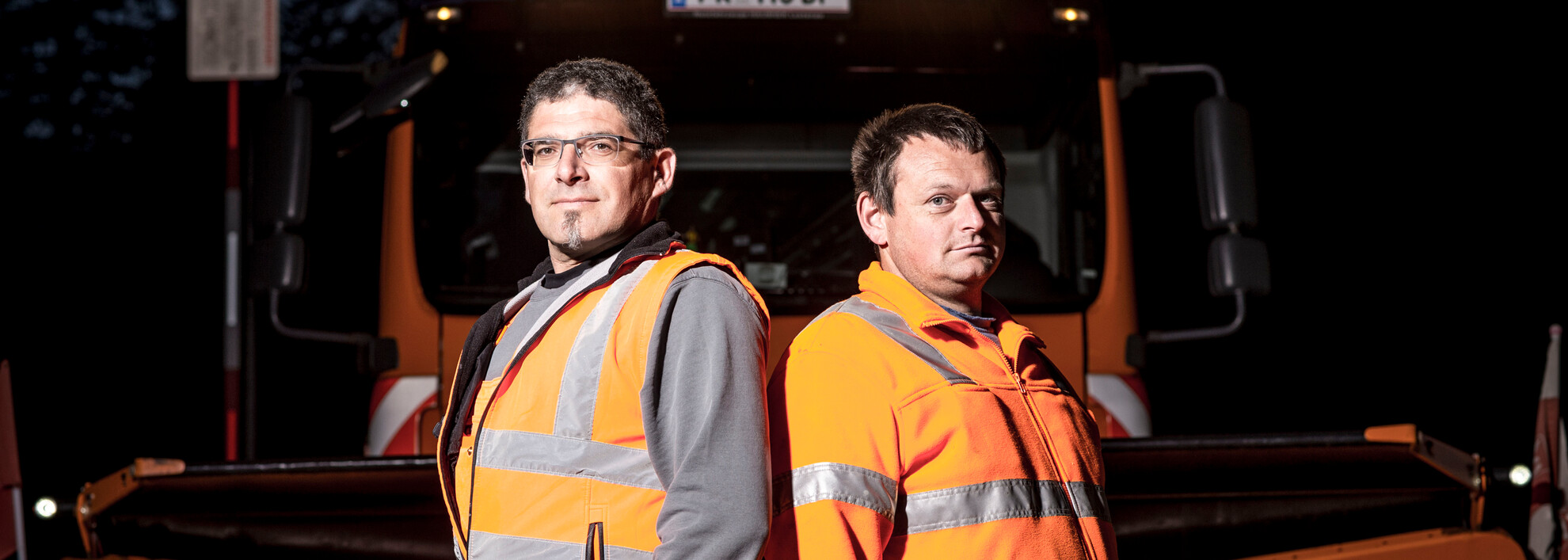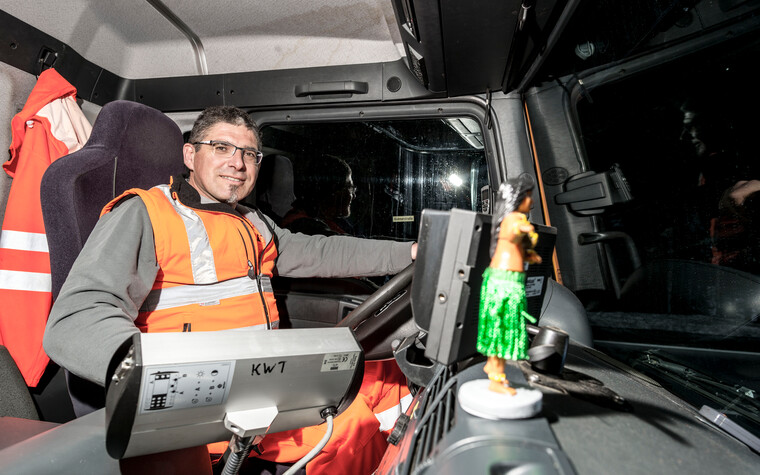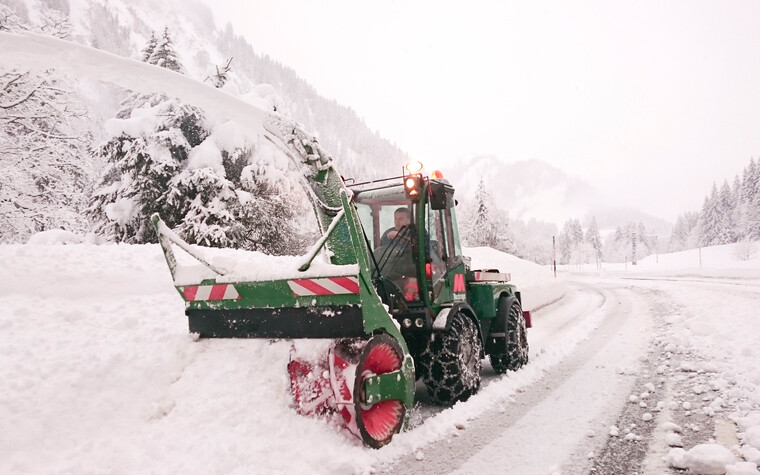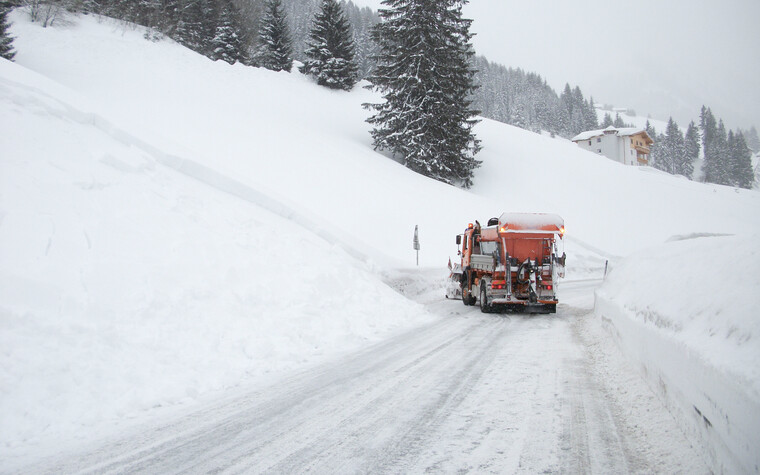

The Snow Shifters
When Old Mother Frost is in full flow, they are also in top gear to ensure that snow and ice are kept where they belong – not on the road: The Snow Shifters from Kleinwalsertal!
Snow...
It is awaited with much anticipation, and the more of it that falls, the more excitement it awakes in winter sports fans and hikers. But when snow remains on streets and pavements, growing deeper at lightning speed, this winter wonder can also become an obstacle, and at worst even a hazard. In terms of snow clearing, Kleinwalsertal is well equipped. The Vorarlberg Road Maintenance Department, the Community of Mittelberg and countless service providers work tirelessly hand-in-hand to ensure that you enjoy unhindered access to roads, footpaths and hiking trails. For one day we accompanied the snow plough on its rounds and returned with a better understanding of the work carried out by the road-clearing commandos.
The thermometer rollercoaster ride
As the two snow ploughs set out from Baad at 4 o’clock in the morning, the valley is still asleep under a fresh blanket of snow that has grown visibly thicker in the blink of an eye. The snowfall keeps getting heavier, and fat, brightly lit snowflakes dance in the snow plough’s headlights. To the right of the driver’s cab, a white powder fountain sprays high into the air. Although this is Hermann’s 20th winter in a snow plough, his continued enthusiasm for the wintry conditions is writen all over his face. However, there are still days where Mother Nature really puts the Kleinwalsertal winter maintenance team to the test. Of course, modern technology makes things much easier and more comfortable, but despite this every winter is different and brings its own personal challenges. For the road maintenance team, when the thermometer starts its rollercoaster ride, the amount of snow is usually the least of their problems; far more difficult is the task of keeping the roads clear of black ice. Calculating the correct amount of road salt is complex, especially when trying to pay attention to the environmental balance. But with safety as their top priority, Hermann and his team try to optimise the salt dosage and make it as environmentally friendly as possible.
The decision to clear snow or not is taken at 3 am by Hermann Fritz, the municipal manager, or his deputy Andi Beer. A decision that must be considered carefully, as one phone call will set in motion a far-reaching chain of events. The phone call will activate a whole host of snow clearing service providers in Mittelberg, Hirschegg and Riezlern, who will then start work at around 5.30 am, so that by the time the traffic starts, the streets are as clear of snow as possible. When it comes to assessing whether the clearance team needs to deployed, and how big it needs to be, the most accurate weather forecast in the world cannot compensate for their long-standing experience. If they overestimate the snowfall, the result is expensive empty trips. If they underestimate the snowfall, snow and traffic chaos is inevitable.
Experience more together
Starting from the main axis, the Kleinwalsertal winter maintenance service works its way out to the more remote districts, followed by the winter hiking trails. If everything goes according to plan and if there are no avalanche closures, a team in each town begins preparation of the winter hiking routes at 7 am, meaning that straight after breakfast, winter hikers can head straight for freshly groomed winter hiking trails. As far as possible, routes are machine groomed using a tractor, quad or skidoo. Depending on the slope and the road surface, however, this is not always a safe option, meaning that some areas have to be groomed by hand. Kleinwalsertal tries to enable as many winter sports fans as possible to immerse themselves in the wintry natural landscapes. Thus, when preparing the winter hiking trails, key areas are places where the interests of skiers, winter hikers, tourers and cross-country skiers overlap. Conversely, if a winter hiking trail runs alongside a cross-country skiing trail, hikers are requested to stay on the marked hiking trail. Finally, we must show respect for nature, which allows us to use it for our own pleasure, and respect for the needs of others, especially the Alpine habitat and its occupants. And, above all, it is comforting to know that nature reserves its right to be unpredictable.




Share page...
...and tell others